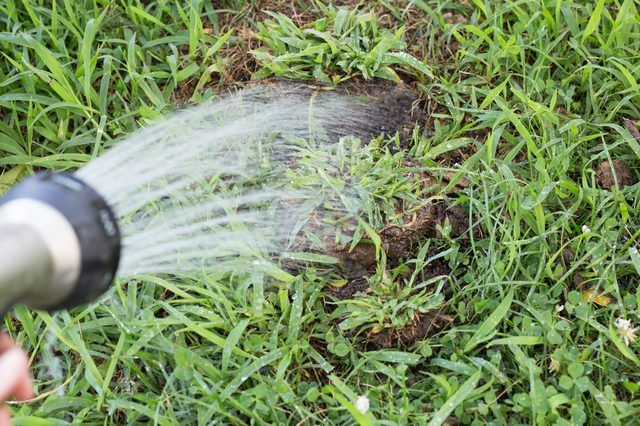Bulbs
Flower Basics
Flower Beds & Specialty Gardens
Flower Garden
Garden Furniture
Garden Gnomes
Garden Seeds
Garden Sheds
Garden Statues
Garden Tools & Supplies
Gardening Basics
Green & Organic
Groundcovers & Vines
Growing Annuals
Growing Basil
Growing Beans
Growing Berries
Growing Blueberries
Growing Cactus
Growing Corn
Growing Cotton
Growing Edibles
Growing Flowers
Growing Garlic
Growing Grapes
Growing Grass
Growing Herbs
Growing Jasmine
Growing Mint
Growing Mushrooms
Orchids
Growing Peanuts
Growing Perennials
Growing Plants
Growing Rosemary
Growing Roses
Growing Strawberries
Growing Sunflowers
Growing Thyme
Growing Tomatoes
Growing Tulips
Growing Vegetables
Herb Basics
Herb Garden
Indoor Growing
Landscaping Basics
Landscaping Patios
Landscaping Plants
Landscaping Shrubs
Landscaping Trees
Landscaping Walks & Pathways
Lawn Basics
Lawn Maintenance
Lawn Mowers
Lawn Ornaments
Lawn Planting
Lawn Tools
Outdoor Growing
Overall Landscape Planning
Pests, Weeds & Problems
Plant Basics
Rock Garden
Rose Garden
Shrubs
Soil
Specialty Gardens
Trees
Vegetable Garden
Yard Maintenance
How to Fill Holes in the Lawn With Soil
How to Fill Holes in the Lawn With Soil. Lawn holes appear for various reasons, from bone-burying dogs and treasure-hunting children to normal post-construction settling. Tunneling rodents such as chipmunks or moles leave open areas underground creating miniature sinkholes. Not only are lawn holes unsightly, they can cause accidents. The simple...
Lawn holes appear for various reasons, from bone-burying dogs and treasure-hunting children to normal post-construction settling. Tunneling rodents such as chipmunks or moles leave open areas underground creating miniature sinkholes. Not only are lawn holes unsightly, they can cause accidents. The simple process of reclaiming those spots by filling them in with soil is basically the same across the board. Prompt, proper hole repairs are important for your lawn's beauty and safety.
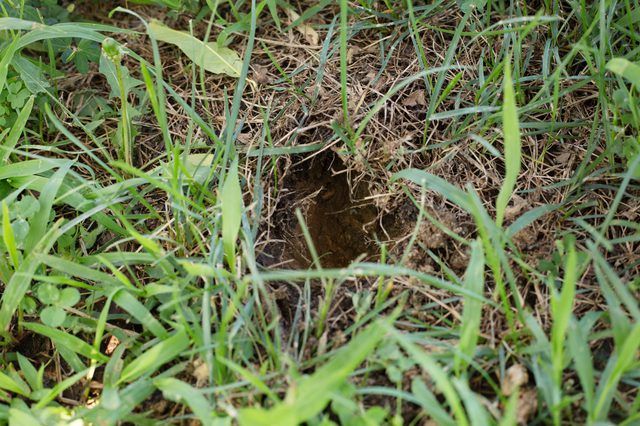
Things You'll Need
Soil
Shovel
Tamper (for deep holes)
Sod plug tool or sharp sod knife
Garden hose
Step 1
Remove the top layer of sod around the hole. Dig down 4 inches into the soil, slide the shovel blade under the roots, and lift the sod out of the area. If the hole was caused by a collapsing rodent nest, dig out the surface until you locate the nest so you can fill in the tunnels around it.
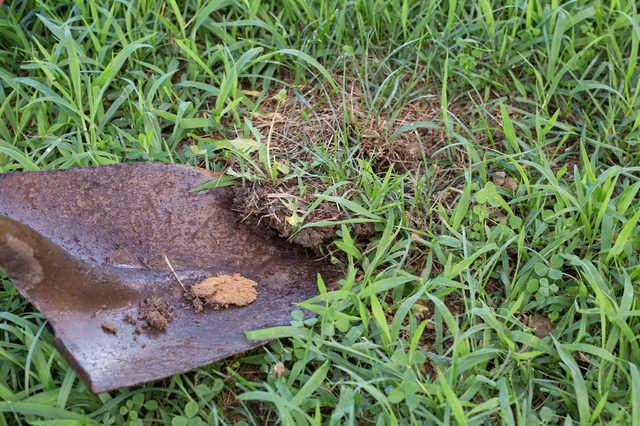
Step 2
Fill the hole with soil until it is approximately 4 inches below surface level. A blend of equal parts of potting soil, sand and compost provides a good base for replacement grass to root. Use a tamper or a 6-foot, 4-by-4-inch board on end to compact the soil and prevent future settling. Repeat filling and tamping until the final layer is approximately 4 inches below the surface of the surrounding lawn.
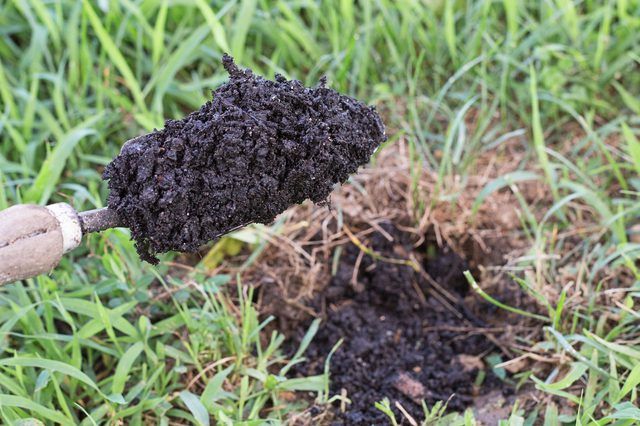
Step 3
Replace the sod you removed at the beginning to re-cover the hole. If the hole was caused by a collapse or was old enough that grass covered it, that should be sufficient sod to repair the area. If the hole was not covered with grass, fill it with soil until it is level with the top of the surrounding soil. Gently tamp the soil to fill the hole to the brim.
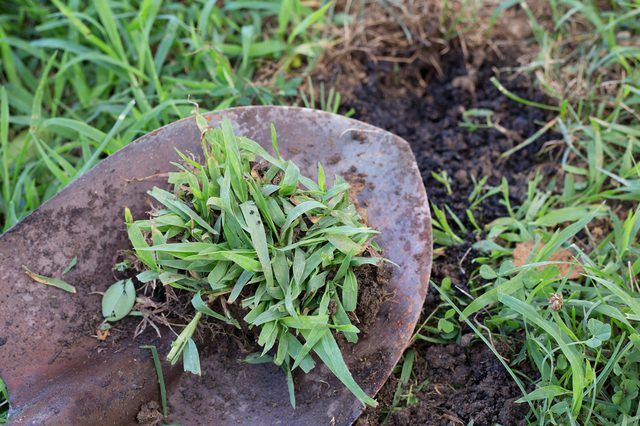
Step 4
Place sod plugs gathered from the surrounding lawn at 6-inch intervals across the soil in the hole. Press a sod plug tool at inconspicuous spots in the existing lawn or use a sharp sod knife to cut 2- to 4-inch pieces of sod as needed for the hole. Using sod plugs to reestablish the hole after the repair helps blend it in with the existing lawn.
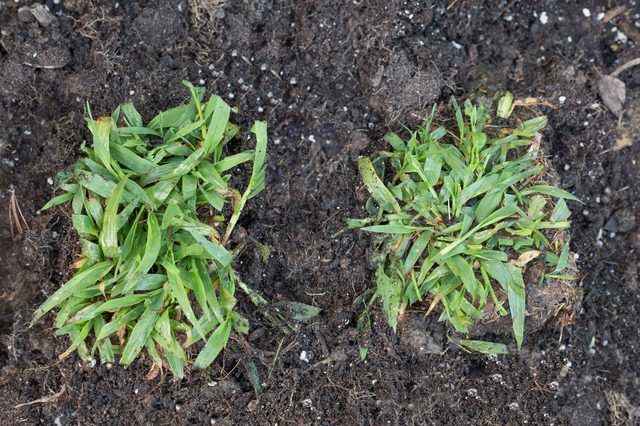
Step 5
Water thoroughly and keep the area moist until the sod plugs are established and begin to grow.
